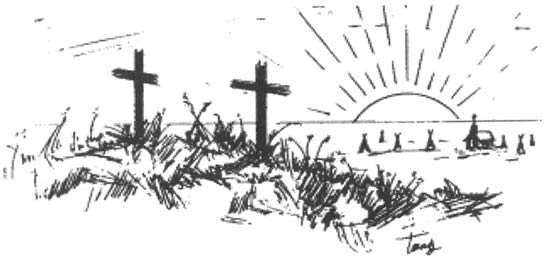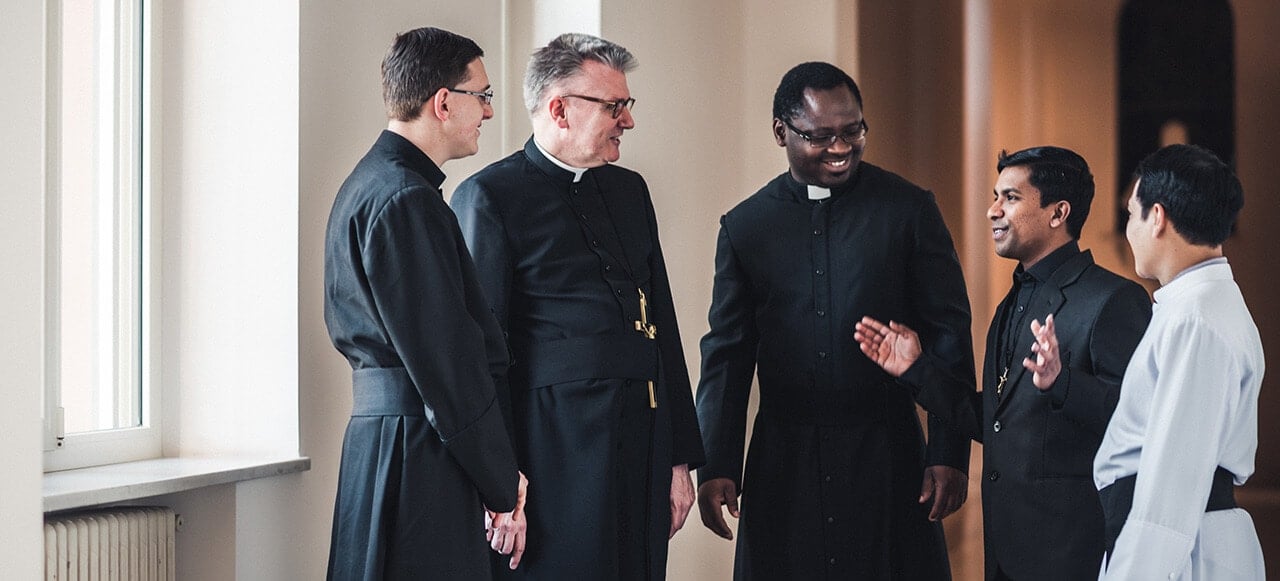November 16, 1985 brought to mind the 100th anniversary of the execution of Louis Riel, chief of the Métis upheaval in 1885. This date also brings to mind the tragic death of two Oblate missionaries who were killed in this rebellion, victims of their charity. Father Léon Fafard, born in Saint Cuthbert, Québec, was at that time director of the mission at Lake La Grenouille in northern Saskatchewan. Father Félix Marchand, recently arrived from France, had left his mission at Lake L’Oignon to celebrate the Holy Days with his Oblate confrere. A revolution was brewing within the Métis population of the region, who felt incapable of having their rights respected by the Ottawa government. About one hundred nomads, under the leadership of Chief Gros Ours (Big Bear), invaded the mission and roused the inhabitants of the reservation. For their part, the missionaries tried to maintain them in peace.

The massacre of two Oblates
On the morning of April 2, Father Fafard invited his flock to the ceremonies of Holy Thursday. With Father Marchand at his side, he began the Mass. But suddenly a band of armed men interrupted the service and forced all the inhabitants of the reservation to leave the premises and proceed to the rebel camp, one kilometer away. Father Marchand went first, followed by a file of prisoners, men and women, White or Amerindians. Father Fafard was at the end of the march, exhorting his people to calmness. A government employee, good Irish Catholic, refused to advance. He was shot in the back. Upon hearing the poor man’s shout, Father Fafard ran to his side. But the priest also received a bullet and fell heavily to the ground. At that time, Father Marchand had disappeared below an incline in the terrain. He had not seen anything but he heard someone say that his confrere had just been killed. He backtracked in haste. As soon as he appeared on the knoll he was struck by a bullet to the forehead and fell, another victim of dedication and charity.
The Ingratitude of a young Amerindian
Noticing that Father Fafard was still breathing, the rebels formed a circle around him. Among them was one who was called the “miracle child”. This was the nickname of a young Amerindian, a protégé of the missionary. When he was gravely ill, around the age of five, he was miraculously cured after his Baptism. Now an adolescent, he had provided many services for the Oblate. The leader of the rebels then spoke to the “miracle child” : “We could never tell whether you are on the side of Whites or with us. Now is the time to let us know. If you are with us, you will finish off this White Man. Take this gun and fire, or we’ll fire on you.” After some hesitation the young man took the gun in his trembling hands. At that moment, Father Fafard opened his eyes and turned toward his protégé, as if imploring his pity. In panic, the Indian pulled the trigger and brought to an end the days of his benefactor.
The kindness of Marguerite, and elderly Amerindian
A few days later, Bishop Grandin came to Lake La Grenouille. He could only fathom the magnitude of the disaster. Everything had been pillaged and burned. From among the witnesses of the massacre, Marguerite, an elderly Amerindian lady, could give him this account: “After the rebels departed, I went to find the missionaries. They were holding their Oblate crosses in their hands, which were reddened with blood. I drew water from a nearby swamp to wash their faces, their hands and their crosses. As I looked upon them thus” she added, “I thought of the sorrows which the Blessed Virgin must have felt, on Good Friday, when they brought her the body of her Son, pierced by nails and all bloody.”
In a letter which he then addressed to Father Fafard’s mother, Bishop Grandin reflected thus: “It appears to me, dear Mrs. Fafard, that the kind elderly lady was communicating this good thought for you. You can compare your sorrow to that of the most Blessed Virgin, and with all the more reason, that the victim we both grieve resembles the Grand Victim of Calvary.”
André DORVAL, OMI
